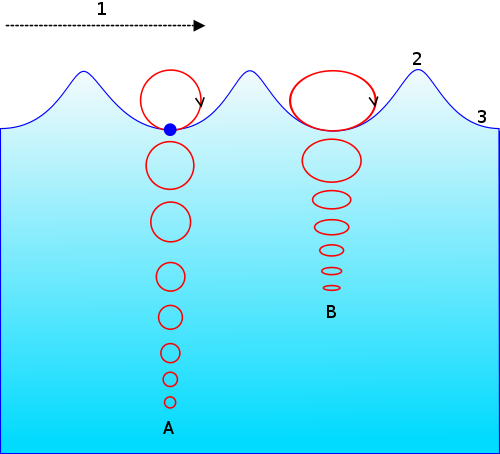Wave Types
Waves come in three basic types:
- Longitudinal
- Transverse
- Orbital
Longitudinal Waves
These waves move in the same direction as the direction of travel and are the result of compression that propagates in the direction of travel. Look at the animation below.

Transverse Waves
A transverse wave moves in a perpendicular plane to the direction of travel. In other words, as the wave moves in one direction, the transverse wave moves up and down relative to the direction of propagation.

Orbital Waves
It seems counter intuitive because out experience has shown us something different, but surface waves do not actually move in any particular direction. The water molecules move up and down in orbitals to produce the crest and trough of the wave.
If you were to place an object on the surface of a perfect, theoretical wave the object would move up and down with the wave and would not move in an longitudinal direction. The movement would be entirely transverse or perpendicular to the direction of wave energy.
How is this possible? Well, in the reality of the environment, there are other forces acting on the object that will move the object away from that theoretical up and down direction. For example, wind that is generating the wave will act on the object as well and move it in the direction of the wind. Other forces act on the object as well that tend to move objects through the water but their influence is miniscule to the influence from the wind.

In the diagram above, you can see that the water molecule at the surface moves the most with the molecules below moving less distance with increasing depth. Eventually, you reach a depth at which the water molecules are not moving. The depth depends on the wave height and other factors.
Licensed under the Creative Commons Attribution 3.0 License